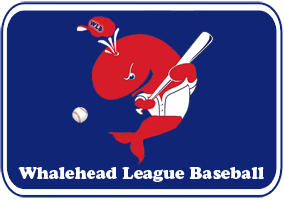
UPDATED: 4/6/2023
The Whalehead League was created over thirty years ago as a test of real-life baseball knowledge. With that goal in mind, we have generally tried to incorporate as much realism as possible. Moving to OOTP was a huge step in that regard. Things that used to be handled outside the game are now self-contained within OOTP’s game engine. OOTP isn’t perfect for our purposes, however, so we tweak some things to better align our goals with the game.
One of the things we tweak is updating player ratings. To effectively manage your team, it’s important to understand exactly how our players are rated.
When are Player Ratings Updated?
Ratings are updated twice a year, at the end of both the MLB and WLB seasons and when the new version of OOTP is released.
Major League Players
Fundamentally the players most of us will use during a Whalehead League Championship Season will be real major league players from the most recent MLB season. Our league tethers the development of these players to their real-life development.
All players with 130+ PA or 30+ IP in the most recent MLB season or have 1+ years of experience in our league are considered Major League players. They all have their ratings in our league file updated to OOTP’s end-of-season Live Ratings (except Experience for defensive experience, contract, and service time related info).
Essentially, then, at the beginning of our offseason, we know the game ratings for the great majority of players who will play in our major league teams in the upcoming year.
From that point until the end of our next season, players’ talent levels (OVR ratings) change due to OOTP’s player development model/engine. (Some players get better; some players get worse.)
Regardless of the way a player evolves during the course of a season, though, he’ll get adjusted to his real-life abilities at the end of the next season (real).
Minor League Players
As you know, OOTP allows us to have a fully functioning minor league system. Before moving to OOTP those players were just names on a list. In OOTP those players are active participants who can be used to supplement our major league roster. Unfortunately, OOTP only Live Updates player ratings for major league players.
This presents a dilemma. How do we balance our desire to have player development be tethered to real life and still use player development and the game’s AI (which several GMs use to help manage their teams)?
What we’ve chosen going forward is to update the POT rating when the new game comes out in March (real). (Since we begin our season earlier than in real life, the in-game date at the time of the update will fall sometime between April and May.)
The factors behind this decision are:
- Player development is still tethered to real life.
- Our player development decisions (budget, coaches) still impact how well or quickly our prospects improve.
- Human GMs have some idea of which prospects might be able to impact the upcoming championship season.
- The AI can still make acceptable, if imperfect, decisions during the offseason.
As mentioned, it’s an imperfect choice. In the game, teams will have useful scouting report information on players’ current OVRs BUT they can’t reliably use POT to estimate future value. (This is particularly true for the highly volatile reliever market.)
To get a handle on future value (how players will trend) during the offseason, GMs will need to venture outside the game and consider players’ most recent season stats, their projected stats for the upcoming MLB season, and scouting reports. In other words, GMs with better knowledge about the real-life prospect status of players will have an edge.
How will the Update Process Impact Player OVR?
Updating Potentials in March (when the next version of OOTP is released will nudge players toward their real-life development. Players with increased POT will tend to trend upward. Players with decreased POT will trend downward.
This process won’t be particularly important for lower-level minor leaguers except for AI teams. If we find human GMs taking advantage of AI-controlled teams during the offseason, the Commissioner will take action (including disallowing unfair deals). Otherwise, franchises on AI will have to live with the consequences of the imperfect info during the offseason.
Some Examples (written before 2020 season)
Last year Keibert Ruiz started the season as a 35/60. Over the course of the season, he developed well. He progressed to our majors and played well.
OSA now says he’s a 55/55. He didn’t play in real MLB so he hasn’t been updated yet. In March his underlying POT ratings will get updated.
Will his POT ratings go up or down? I can’t give you a definitive answer but I can get an idea by checking out how well he played last year.
I can also check his projections. (ZiPS, which the game uses at its base, isn’t available yet. Steamer600 works as a decent proxy, though)
Although his 2019 stat line is somewhat similar to 2018, his power dropped. my best GUESS is that his POT will drop at least a little (to somewhere between 45 and 55) so I’d expect his OVR to drop a little over the next year in our league.
Addition: starting at the end of the 2021 season, a player like Keibert Ruiz will have his OVR and POT ratings fully updated at the end of the year, using the live-start ratings. Since Ruiz would not have appeared in real MLB (which means his ratings in the live-start wouldn’t change much, his value in the game will regress back to the March OOTP OVR).
The addition of WLB 1+ service time players to full updates at the end of the season should incentivize WLB GMs to delay the call-up of real-life prospects to their WLB major league until those prospects are on the cusp of making an appearance in the MLB major leagues.
The Blue Jays have Nick Gardewine. OSA rates him at 70/70. If you look at his stats, though, you’ll find that he was released during the season and is still a free agent.
Although I’ve been retiring guys like him, Da Pirate believes he’ll get signed by someone so I left him in the set. In March, if he’s not in the set, I will retire him.
If he does sign, though, his POT will probably take a pretty big hit because his projection isn’t particularly good. I’d say his underlying POT ratings will probably drop to somewhere around 45 (as a reliever). (Now this won’t show up on his OOTP page because if a player’s OVR is higher than his POT the game displays the OVR as his POT.)
What this will mean in Gardewine’s case is, he’ll still be useful for Toronto at the beginning of the season but his ratings and talent will trend down during our 2020 season.
Relievers are inherently volatile in the game (and real-life) because of small sample size issues, so you should expect their ratings to be volatile as well.
Buddy Reed started the season as a 20/50. He’s currently a 25/40 in the game. He had a pretty bad year in AA this season. He will probably have his POT downgraded but his OVR probably won’t be impacted.
Royce Lewis started the year as a 20/65. He’s currently a 35/65. He had an underwhelming performance in 2019. How will he fare? On MLB Pipeline’s end-of-season Top 100, he’s listed at #9. Since OOTP’s POT isn’t just stats based, his POT rating probably won’t change much, if at all.
Eric Hanhold started the year as a 35/60. He’s currently a 65/65. He had a bad year in AA/AAA, with more hits than innings pitched and less than a strikeout per inning. He’s probably going to take a beating in the March update. Although he’ll still be usable during the early part of the season, he’s probably going to be a bum by the end of the year.
Closing Thoughts
Our updated plan for minor leaguers shouldn’t negatively impact the value of most minor leaguers. The class of players, however, that you’ll really need to watch most will be minor league pitchers, especially relievers. If you do your due diligence and focus on what you know about the player in real life, you should do fine.
Common sense is king. If a player hasn’t played in the real Major Leagues yet, his in-game ratings (and/or his real-life prospect status) shouldn’t be trusted to justify big contract offers, especially multi-year deals. First, the players’ ratings might change in the game. Second, once the player makes the Major Leagues in real life, he might suck, which will definitely be reflected when his full ratings get updated after his first full season.
Archive of Rule Changes No Longer in Force
Change to Player Updates Used for the 2023 WLB Season.
Starting at the end of the 2022 season, ALL players will be updated to their OOTP 23 end-of-season MLB Live Start ratings. (The Commissioner has an Access database that he uses to perform the updates. He imports the league roster file, the MLB Live Start roster file, matches IDs, then runs a query, which generates the updated league roster file. The updated roster file is then imported to the league file.
League service time, contracts, and experience at defensive positions are not updated.
During the off-season, the Commissioner MANUALLY updates players with Injury Proneness ratings in WLB that differ with MLB MLB Live Start ratings. This keeps player health tethered to real life. This is a tedious process for the Commissioner who does it at the urging of league members. It’s also the worst day of the Commissioner’s year.
The Commissioner also manually updates pitcher stamina, as outlined in the league rules.
After previously only updating potential ratings for minor league players, this change limits the value of minor league player development. Only major leaguers and minor league players who are close to the majors benefit from the money spent on player development.
Previous Rating Update Info
UPDATE: 2/25/2022
OOTP recently announced OOTP 23 will be delayed until some time in April. This means minor league updates would be pushed back to July (game). With that in mind I’m going to postpone the minor league rating updates to the end of the year. Since we’ve been updating minor leaguers this way the last few years, I’m going to make life easier for myself by getting rid of the plans to update them earlier.

Thanks for the info Jim.